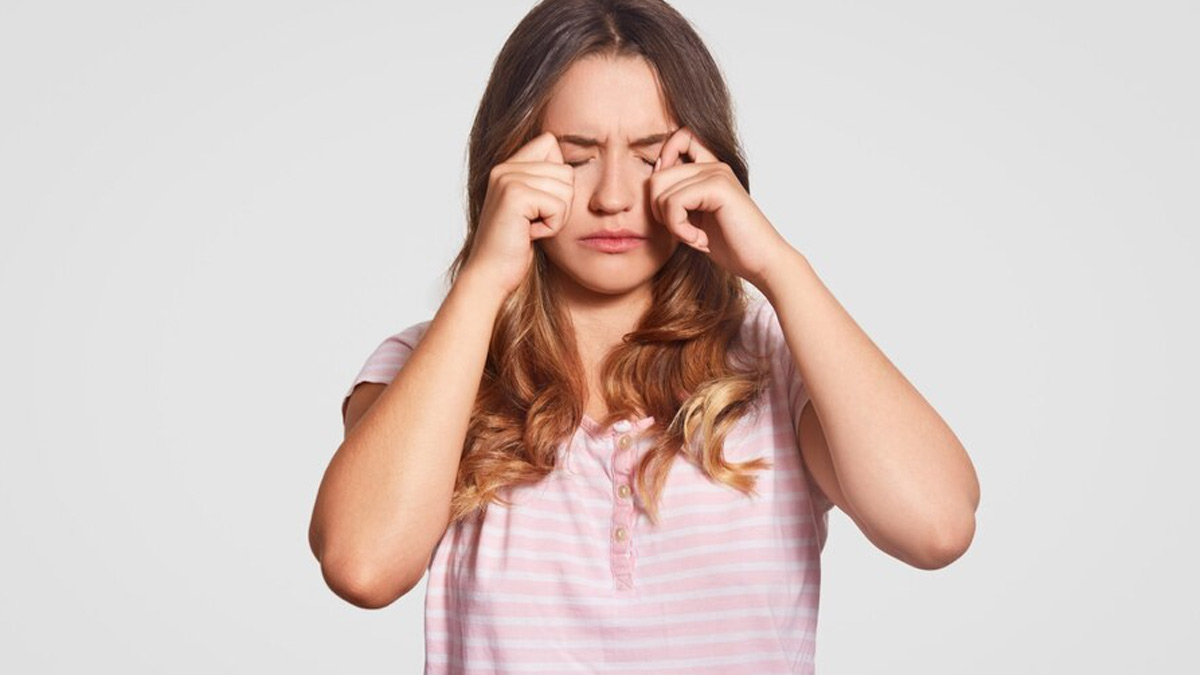
Do you experience a constant feeling of dryness and irritation in your eyes? If this is accompanied by blurred vision and eye fatigue, there may be chances that you are dealing with Evaporative Dry Eye (EDE). As the name suggests, it is a common form of dry eye disease characterised by rapid tear evaporation. We spoke to our expert Dr Mary Varghese, MBBS, DOMS, MS, Ophthalmology, Apollo Spectra Hospital, Bengaluru, who explained the causes, symptoms, diagnosis, and treatment for this disease.
Table of Content:-
What Is Evaporative Dry Eye?

EDE occurs when the tear film’s outer lipid layer is insufficient, leading to increased tear evaporation and dry eyes. “A tear film lines the inside of the eye, keeping it moist and shielding it from foreign objects. It consists of three layers: water, lipid, and mucus. EDE emerges when there is a problem with the outermost layer of the tear film called the lipid, or oily layer,” said Dr Varghese.
According to a 2018 study, females are nearly twice as likely as males to develop EDE, and this eye condition is more prevalent among older individuals.
Causes Of Evaporative Dry Eye

The most common type of dry eye is evaporative dry eye which mainly results from disorders in meibomian glands which produce the oily layer in the tear film. Here are some factors contributing to this dysfunction:
- The common cause of meibomian gland dysfunction is the blockage or improper functioning of the meibomian glands. This leads to a decrease in the lipid layer and an increase in the evaporation of tears.
- Natural ageing processes can lead to decreased function of the meibomian glands. Hormonal fluctuations, particularly in postmenopausal women, can affect tear production and meibomian gland function.
- The tear evaporation is easily accelerated by exposure to dry air, wind or air conditioning.
- Extended use of contact lenses can interfere with the tear film and contribute to dry eye symptoms.
Also Read: Dry Eyes And Headaches: Expert Explains The Connection Between The Two
Symptoms Of Evaporative Dry Eye
Uncomfortable or irritated eyes are the most common symptom of EDE. This discomfort can take several forms:
- Stinging or burning sensation in the eyes
- Eye fatigue, particularly after extended computer use, phone use, or reading
- Grittiness, or a feeling of having something in the eyes
- Blurred vision that comes and goes
- Difficulty wearing contact lenses comfortably
- Crusting around the eyes
- Discoloured, swollen eyelids
- Increased sensitivity to light (photophobia)
- Excessive tearing happens when the eyes attempt to compensate for dryness
Diagnosis For Evaporative Dry Eye

The diagnosis of evaporative dry eye involves an assessment of the eye by an ophthalmologist. The doctor can help to identify the risk factors by discussing the symptoms, lifestyle, and medical history with the patient.
Dr Varghese added, “The management of dry eyes can involve eye tests that help the eye doctor determine the stability of the tear film, the rate of tear production, and the tear quality. Other specific eye drops are also useful in determining how rapidly the tears dry up from the person’s eyes.”
Also Read: Dry Eye After LASIK Surgery? Expert Explains How To Manage The Condition
Treatment For Evaporative Dry Eye

The management of evaporative dry eye involves treating the symptoms as well as the root factors contributing to it. Here are some expert-recommended treatment measures:
- Certain medications, such as antihistamines, antidepressants, and diuretics, can reduce tear production and over-the-counter lubricating eye drops can provide temporary relief.
- Using warm wet towels or warm compresses on the lids would help in the secretion of meibomian glands.
- Regular cleaning of the eyelids is essential for removing debris and reducing inflammation.
- Omega-3 fatty acids can be recommended to increase tear production and maintain the functionality of the meibomian glands.
Preventive Tips For Evaporative Dry Eye
Preventing evaporative dry eye involves adopting lifestyle changes and protective measures. Dr Varghese listed some of the tips as follows:
- Maintain Eye Hydration: Keep your eyes hydrated by blinking regularly, especially when using digital devices.
- Environmental Control: Use humidifiers to add moisture to the air and avoid dry, windy conditions.
- Protective Eyewear: Wear sunglasses or protective goggles to shield the eyes from wind and UV exposure.
- Healthy Diet: Incorporate omega-3 fatty acids into your diet through fish, flaxseed, or supplements.
- Proper Contact Lens Care: Follow proper hygiene and usage guidelines for contact lenses to avoid irritation.
Bottomline
Dr Varghese concluded, “Ongoing pain and discomfort in the eyes can be debilitating and make it difficult to carry out daily activities. Without treatment, EDE can cause serious complications. By understanding its causes, recognising symptoms, seeking a timely diagnosis, and following appropriate treatment and prevention strategies, individuals can effectively manage and alleviate the discomfort associated with this condition. Regular eye care and adopting a proactive approach can help maintain eye health and prevent the progression of evaporative dry eye.”
[Disclaimer: This article contains information provided by an expert and is for informational purposes only. Hence, we advise you to consult your own professional if you are dealing with any health issues to avoid complications.]
Also watch this video
How we keep this article up to date:
We work with experts and keep a close eye on the latest in health and wellness. Whenever there is a new research or helpful information, we update our articles with accurate and useful advice.
Current Version
